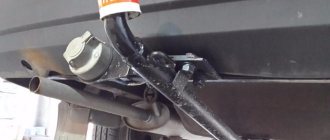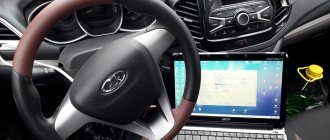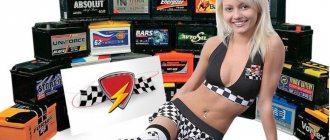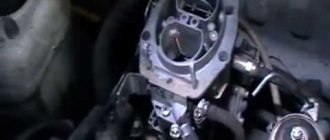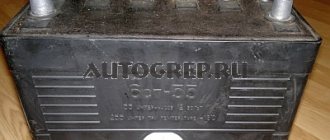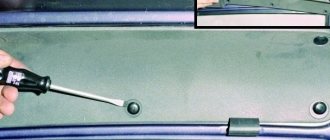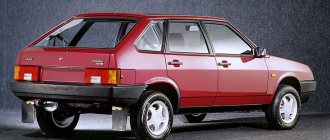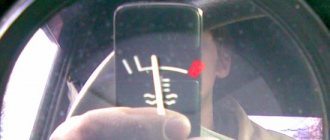Car painting jobs require attention and knowledge. To make a car look beautiful, it is necessary not only to carefully prepare the surface of the car body, but also to choose a high-quality paint coating. Moreover, the material must be prepared correctly. To achieve a better result, a special car paint solvent is added to it.
How to thin car paint? Some useful tips
Download PDF
There is an opinion that thinking about how to dilute car paint is an absolutely unnecessary point. They say that it is already fully prepared for further use. Some of the varieties of automotive enamels, however, already contain a certain amount of solvent. However, it is worth remembering that during storage (and the paint did not reach you immediately from the factory), all such materials thicken. It’s not for nothing that they often come with thinners: it’s wiser to dilute the composition right before use, without guessing how much solvent has evaporated since the enamel was packaged in a jar.
Composition of car paints
All automotive paints and enamels contain three basic components:
- pigment is a powder substance that gives paint the required color;
- binder base - it holds the pigment and ensures adhesion of the material to the surface;
- solvent - with its help the composition is given the necessary consistency.
Different types of dyes have different physical characteristics - elasticity, density, degree of fullness, and hardness of the layer after drying.
Content
However, even if a thinner is not included, the packaging must indicate which one is suitable for this particular paint and its recommended amount. Don’t neglect these instructions: there are many manufacturers, car enamels have different compositions, and if you don’t want to ruin the body of your car or spend money on repainting it, you should read what the manufacturers wrote on the can.
How to dilute car paint and how much to pour such liquid also very much depends on the ambient temperature. So before buying a solvent, it is worth assessing all the conditions in which you are going to paint.
Container for paint thinning
When mixing paints, everything is important, even the container in which it will be mixed. To do this, it is recommended to take a strictly cylindrical jar so that the bottom and walls are even.
It is in such a container that the paint will mix more evenly and an equal amount of added components will be visible. It is best if it is a measuring container with volume marks marked on the walls. It is thanks to them that the components of the paint can be mixed in certain proportions.
Stores also sell rulers with marks on them. Using these marks, the volume fractions of each component can be determined. After adding all the ingredients, it will be convenient to mix them with the same ruler.
Why breed?
As already mentioned, over time any paint thickens, even if it is hermetically sealed. Paint that is too viscous will spread very slowly over the surface of the body. As a result, it will harden before it has time to cover the area allotted to it. In addition to unnecessary consumption of substances, this phenomenon also threatens with unsightly sagging on the body. However, when diluting paint, you also need to know when to stop. Paint that is too liquid will simply flow off the body without having time to form a layer of sufficient thickness.
And finally, if you made a mistake with the solvent and took the wrong one, car enamel will behave completely unpredictably: it may stop setting altogether, it may delaminate, or it may form flakes or clots. So the first, main and immutable rule of dilution: carefully read the manufacturer’s recommendations!
Temperature dependence:
Usually the instructions suggest several types of solvents. To choose the right one, you need to know at what temperature each one is used. Some thinners are positioned by the manufacturer as universal, suitable for any temperature
Paint polarity:
It is indicated on the same bank. And if there is no list of suitable solvents there, you need to focus on it.
Enamel is based on polar substances. Solvents must be based on compounds with a hydroxy group: alcohols, ketones, etc.
Non-polar paints made from liquid carbons. Kerosene, white spirit and similar substances are suitable as a diluent.
Paint dilution proportions
The stores offer paints and varnishes from various manufacturers, and universal proportions do not exist in nature. Each paint manufacturer can indicate in what proportions their paint is mixed.
Although there are no universal recipes, recommended compositions still exist. As it was said, for two-component mixtures you need to add 50% hardener and 10-20% thinner to the base. For one-component formulations, dilute to 50-80%. More precise proportions are indicated on the manufacturer's container.
If the paint is selected through selection, in this case, the complete required set is issued. It just needs to be mixed correctly (all components are already hung in the right proportions). For one-component formulations, they will most likely give you a ready-made, properly mixed product.
It is also worth considering the lifespan of the finished paint and varnish material. They all have their own expiration date. If this indicator is neglected, then the viscosity may change. Therefore, two-component formulations are not mixed in the store when sold.
If the paint has dried
Sometimes people are interested in how to dilute car paint, of which there is still a lot in the can, but it is already so thick that the brush stands in it and does not fall off. The rules are basically the same; but since there is nothing left to lose, you can take the simple route and use the 646th solvent
or its analogues. This thinner is considered universal and should help. And if the enamel curls or flakes, the jar is still incomplete.
Another thing is that the very expediency of its use raises doubts: the properties of the enamel after such disturbances have probably changed, and what color it will give after drying is a big question.
In addition, mini clots could have formed in the paint, invisible to the eye, but forming an unattractive shagreen on the body. So this enamel is only suitable for minor touch-ups in inconspicuous places. However, the issue of application, of course, will be decided by the amateur car painter himself.
Source
Transparent layer before applying metallic
One of the problems that arises with paints that have a high content of metal particles (for example, metallic silver) is that metal flakes can collect in even small scratches of the surface being painted. This may affect the final result. Sometimes, before varnishing, the transition looks good. After varnishing, metallic particles may settle into small scratches, and this will be noticeable.
p, blockquote 6,0,0,0,0 —>
To combat such drawdown, as well as halos and a visible transition line, you can use a transparent base (binder). This can be either a diluted binder (in fluidity as a base) or a very thinly diluted varnish. This coat will fill in minor scratches and will give the metallic a smoother surface to apply. In addition, it turns out something like a wet substrate, when applied to which the metallic particles fit as they should. Manufacturers in English call this layer “orientation coat”, as it helps to correctly distribute the metallic particles (orient). This layer can be used both when painting with a smooth transition, and when simply painting the panel.
p, blockquote 7,0,0,1,0 —>
An orientation coat is sprayed onto the entire panel to be painted before the paint is applied. A full wet coat must be applied. Despite the use of an orientation layer, surface preparation must still be thorough. This layer is optional and can be used at the discretion of the painter.
p, blockquote 8,0,0,0,0 —>
Which solvent to choose for car paint
Car painting jobs require attention and knowledge. To make a car look beautiful, it is necessary not only to carefully prepare the surface of the car body, but also to choose a high-quality paint coating. Moreover, the material must be prepared correctly. To achieve a better result, a special car paint solvent is added to it.
Transition solvents
Transition painting is used for partial painting of a car, when it is not possible to select the desired tone of paintwork to the color of the rest of the body surface. In this case, there are several methods for using a transition solvent, which can:
- applied to the border of two shades before applying the base paintwork (it will lie on top of the solvent before it has had time to completely evaporate);
- added to the base paint or varnish in varying proportions (the first layer is ¾:1, and the second is 1:1);
- spray along the transition contour after painting.
For such work, a special solvent is used to transition the base paint or varnish. The second one can be used for acrylic paints.
Author: Ekaterina
Types and features of the choice of solvents and thinners for automotive paints
All existing types of solvents can be divided into several groups, each of which differs from each other in the rate of evaporation. The solvent that will be added to the car paint is selected depending on climatic conditions. There are 3 types of funds:
Paint diluted with a solvent is applied using a spray gun. In order for the coating to be smooth and uniform, the degree of thickness of the product should also be selected so that the equipment can work effectively.
Important! When working with paints, it is necessary to take into account the outside air temperature. This is the main parameter on which the quality of the future coating depends.
Manufacturers of paints and varnishes produce several types of special thinners, which differ significantly from solvents in their effectiveness. And this difference is significant. The diluent is simply added to the product, thereby diluting it to the required concentration.
Factors affecting metallic shade
The main factors that influence the metallic shade are the rate at which the solvent evaporates and how deep the metal particles lie. Their uniform arrangement depends on how dry or wet the solvent layer is.
In the first option, the solvent will dry quickly, and the metal particles will not have time to take the position they need, the paint will become lighter, without the expected saturation. If the layer is wet, the particles will lie too deep and the color will darken.
Color reacts to the following factors:
- If the spray pressure level from the paint torch is higher than specified by the manufacturer, then less will reach the surface itself.
- At low viscosity, the layer is thinner, and metal particles do not have time to penetrate to the depth they require.
- The higher the room temperature, the faster the paint dries.
- With faster passes, less solvent reaches the surface.
- A fast solvent has a high evaporation rate.
The effect of these factors is described in more detail in the table:
| Influence factor | Type of change | Lightening | Blackout |
| Dose and pressure | Lower dose, high blood pressure | Increased | |
| Solvent and viscosity | Fast solvent and increased viscosity | Increased | |
| Sputtering process | Dry | Increased | |
| Wet | Increased | ||
| Spraying distance | Small distance | Increased | |
| Long distance | Increased | ||
| Temperature | Low | Increased | |
| Distance from gun to painted surface | Small distance | Increased | |
| Fast solvent | High evaporation rate | Increased |
Tips and tricks for proper paint dilution
There are a huge number of paints and varnishes, but only some of their representatives are used to paint a car:
All of them differ from each other in performance characteristics, but at the same time they are effectively used by car owners. For a 100% high-quality result, these products are diluted with solvents. What solvent should you use to dilute car paint?
Acrylic paints
This is a two-component liquid, which contains a thinner and a hardener. The desired color is achieved by applying a certain number of layers of material.
For acrylic paints, a specialized automotive solvent is used, which is more expensive than conventional organic solvents (646, 647), but it is worth it. If such a product could not be found, then you can use its analogue - solvent 651 or P 12.
Alkyd paints
Such products are rarely used for painting car bodies, only because they require a more careful approach. The resulting surface should be varnished and polished, but the finished products are distinguished by high performance characteristics and good appearance. The coating prevents the formation of corrosion and performs well in adverse conditions.
For dissolution, white spirit, gasoline, solvent, turpentine and its mixtures are used. There is a universal solvent P 4, but it is better to choose according to the product labeling.
Nitro enamels
They have a mirror effect, for which they have received wide appreciation from car enthusiasts. The body, painted with nitro enamel, differs from other cars in its gloss and metallic sheen. The only significant drawback is toxic fumes during painting work, which are harmful to human health.
Before application, the body surface must be perfectly cleaned and prepared for painting. Nitroenamel dries quickly and lasts quite a long time. It is diluted with organic products, for example, transparent 646.
Advice. This solvent is highly flammable and belongs to the category of aggressive solvents, so it must be handled with extreme caution. To play it safe, you can use the universal product P 4.
Water-based paints
This type of paint is considered the most suitable for painting a car, although it requires expensive equipment to achieve maximum effect. Such products are environmentally friendly and have a number of advantages:
The only negative is the long drying time. Water-based paints are dissolved with plain water or alcohol.
What determines the dilution of auto enamel?
The need to dilute auto enamel is dictated by its following properties:
- density;
- viscousness;
To obtain a high-quality composition suitable for application with a spray gun, you must strictly follow the instructions and not conduct experiments
- drying speed;
- viscosity;
- fullness.
The last indicator is the most important. With the same viscosity, coatings have different concentrations of polymers. Large filling is considered the best for a spray gun. This indicator is indicated on the cans with the following markings, in increasing order of fullness:
- LS;
- HD;
- HS;
- MS;
- UHS;
- VHS.
You can safely dilute high-filled VHS enamels, and be very careful not to overdo it with the thinner - low-filled LS, bringing them to the desired consistency.
See also:
Types of paints for cars
Features of metallic paint dilution
Metallic is considered a complex paintwork and requires precise application technology. The product is widely used for painting vehicles (cars and motorcycles). The surface has a metallic reflective sheen. This effect is explained by the presence of special aluminum powder in the material. The finished coating is not affected by corrosion, and the result will please the eye for a long time. However, mechanical stress and disruption of the integrity of the coating will ultimately lead to its destruction. The paint does not fade under the influence of ultraviolet rays of the sun.
The quality of the coating depends on the degree of viscosity of the material, so the solvent for such paint is carefully selected. A product that is too thick can harm the result because it will not be able to completely fill the rough surface of the car body. Modern metallic paints and varnishes are diluted directly by the manufacturer and are ready for application. The cost of such materials is much higher than others, however, the quality of the coating will amaze with its splendor and beauty.
Source
Filtration of paint after dilution
After preparing the paint material and measuring its viscosity, it must also be filtered. Because all the same, during cooking, some specks may get in or there will be clumps of paint. To prevent all this debris from getting onto the parts of the body to be painted, you need to pass the liquid through a filter.
To filter paint and varnish material, you need to take a paper funnel with a nylon filter installed at the bottom (the cell size should be 190 microns). This funnel can be inserted directly into the spray gun tank and pass the desired liquid through it. The paint is refilled - you can use it.
Communities › All about Paint and Painting › Blog › Is it possible to restore dried paint?
There are a couple of plastics of selected metallic paint. 2 kg. In a year it has dried, but not into stone, it is still viscous. I tried it with solvent 650 and it soaks it up beautifully. But what is the best way to paint parts or what is the best way to dilute them?! And what proportion
Comments 65
Since last year there was a base, I took it for bottling, when I opened the jar, it was like thick honey, I just added thinner to the desired viscosity and painted it, it was fine. I’m not saying that this can be done, but what’s stopping you from diluting and painting, we would have found the answer faster than reading all the comments)
thinner and dilute)
You're right, throw away the paint and forget about it, because if you use it you'll end up with hemorrhage later.
Well, I’m definitely not going to throw anything out, I’d rather paint something for her
2 Development options (professional advice without emotions)
1. The most budget-friendly. You go to the auto enamels store and buy a solvent for the base, now since it’s hot and slow 2 liters, most base coats usually have a 2:1 ratio, that is, for 2 liters of metallic paint there is 1 liter of thinner, but there are some base coats that TDS are diluted in a 1:1 ratio, then you need 2 liters of diluent for 2 lire of base, how to understand how much diluent is needed, take a container and mix in a 2:1 ratio, if the enamel in the container has the consistency of kefir, then the proportion is 1:1 and you need to add another thinner, how to understand that the enamel has already been diluted - very simply take a 190 micron nylon funnel (a strainer is sold in car enamels) and fill it, the diluted paint will pass through the funnel in about 18-20 seconds, that is, the ready-to-apply base is slightly thicker than the solvent )
2. Go to the auto enamels store and buy 200 grams of binder - a colorless resin binder, come, take a bucket, pour the binder, your paint, and the solvent into it according to point 1.
When mixed enamel is stored according to the formula for a long time in a plastic container, the solvent is the first to evaporate, then the binder contained in pigments (toners, grains) since these ingredients have the lowest density and these compounds are more volatile, therefore by adding resin and thinner you will return the enamel to its original state .
PS There have been cases when so-called dissolved crackers were used, when the solvent was completely evaporated from the base; without adding a binder, streaks and cloudiness are possible on complex metallics; if you add a binder, everything will be fine.
Sofa experts, exhale and visit the community with naked women)
Listen, you are an uncouth worm to your grandmother. want a discussion? Let's discuss. So how did you determine that the garage expert database died? Or are you an expert on sour cabbage soup? Or on blogs? I don’t write blogs, I work on paint and paint and give advice according to the customs regulations, and you are throwing out products intended for disposal by a plumbing device called a toilet.
I see your verbal diarrhea does not stop and there are no specifics on the case. And now the numbers: a binder of 200 grams costs 800 rubles, a grower for a base of 2 liters costs 800 rubles, a total of 1,600 rubles, and 2 kilos of metallic from 7,000 thousand. Did you steal it? There is no need to count other people's money and give advice to throw away something. The person himself will figure out what to throw away and what not. As for stickiness, your thinking is sticky, if you were hooked by competent advice, then that’s your problem.
The easiest way is to post a link to ready-made Chinese paints. Why do they also pick up 1000?
2 Development options (professional advice without emotions)
1. The most budget-friendly. You go to the auto enamels store and buy a solvent for the base, now since it’s hot and slow 2 liters, most base coats usually have a 2:1 ratio, that is, for 2 liters of metallic paint there is 1 liter of thinner, but there are some base coats that TDS are diluted in a 1:1 ratio, then you need 2 liters of diluent for 2 lire of base, how to understand how much diluent is needed, take a container and mix in a 2:1 ratio, if the enamel in the container has the consistency of kefir, then the proportion is 1:1 and you need to add another thinner, how to understand that the enamel has already been diluted - very simply take a 190 micron nylon funnel (a strainer is sold in car enamels) and fill it, the diluted paint will pass through the funnel in about 18-20 seconds, that is, the ready-to-apply base is slightly thicker than the solvent )
2. Go to the auto enamels store and buy 200 grams of binder - a colorless resin binder, come, take a bucket, pour the binder, your paint, and the solvent into it according to point 1.
When mixed enamel is stored according to the formula for a long time in a plastic container, the solvent is the first to evaporate, then the binder contained in pigments (toners, grains) since these ingredients have the lowest density and these compounds are more volatile, therefore by adding resin and thinner you will return the enamel to its original state .
PS There have been cases when so-called dissolved crackers were used, when the solvent was completely evaporated from the base; without adding a binder, streaks and cloudiness are possible on complex metallics; if you add a binder, everything will be fine.
Sofa experts, exhale and visit the community with naked women)
Source
Ingredients
First of all, let’s decide on the type of our “paint cocktail”: will it be regular acrylic enamel (which is less likely), or metallic or pearlescent paint (most likely).
Regular acrylic enamel is two-component, with a hardener. The “ingredient kit” for such materials consists of three jars. For example, a liter of paint, half a liter of hardener and 100-150 ml of thinner. That is, when buying a liter of paint, you actually get about 1.6-1.7 liters of diluted paint.
This must be taken into account when selecting paint: some laboratories indicate prices for “thick” paint, and some for “thinned” paint. The difference, as you yourself understand, is huge.
In the case of “metallic”, the base paint is necessarily covered with a transparent varnish on top - without it, spectacular coatings look inconspicuous, and the weather resistance of two-layer coatings is much higher. Transparent varnish, like acrylic enamel, is two-component, with a hardener. But the “base” does not need a hardener - it is one-component.
Thus, the “set” for two-layer coatings already consists of five cans. For example, a liter of “base”, 500-700 ml of thinner for it, a liter of transparent topcoat varnish, half a liter of hardener and 100-150 ml of varnish thinner - a total of 3.3 liters! At the same time, the diluted paint itself was no longer there, the same 1.7 liters.
How to thin car paint?
Acrylic paints flooded the market, reducing the position of other varieties. Car experts recommend using acrylic for painting most elements of the body, and sometimes the interior. The paint is based on water, it quickly evaporates and the mixture hardens. The substance can dry out even before application; if storage conditions have been violated or the shelf life has expired, it is also recommended to dilute the thick paint. Many people prefer to buy new liquid rather than dilute acrylic paint; in reality, the dilution process is easy and does not require much time.
Diluent
To thin metallic paint, a special base thinner must be used. Universal thinner for acrylic products or different solvents will not work. The evaporation rate of the thinner must correspond to the temperature in the workshop. A fast thinner will evaporate too quickly and the metallic particles will not have time to lay down as they should, which will give a lighter shade. If the thinner is too slow, the metallic particles will sink into the paint, making the paint shade darker. In addition, too slow a thinner can cause spots and streaks to appear, since metallic particles will float in the paint for a long time and are located randomly.
p, blockquote 4,0,0,0,0 —>
p, blockquote 5,1,0,0,0 —>
Decorative coating and its components
The paint is easy to apply on most surfaces, providing adhesion and sufficient durability. The problem is often the inappropriate consistency of the paint product. Thick paint creates an uneven layer; in some places the saturation is excessive, while in others the original color of the body is visible. The easiest way to solve the problem is to dilute the substance. Having decided what you can use to dilute acrylic paints and take a readily available liquid for dilution, it will not be difficult to create a high-quality coating.
Acrylic paints are easy to apply on most surfaces
The paint always contains 3 main components:
The most important component is an emulsion made of polymer materials, containing acrylic. High technical and performance qualities and ease of application allowed the paint to be used in many areas. Advantages of the composition:
Paint application does not require professional skills
Thinning is an important procedure to ensure that the car is painted evenly and with high quality. In some cases, the addition of liquid is optional, but in some situations it cannot be avoided.
Information on how to dilute paint for spray guns and other painting methods is applied to the container, but specialists are additionally based on current tasks. For the rough layer, a thick solution is often used, and the final coloring is performed with a thinner substance. Everything here is individual, but there are some norms that are not recommended to go beyond.
What are paints made of?
Any paint and varnish material (paint and varnish material) can in principle be represented as consisting of four basic components, according to which it is customary to classify products by type. This:
- binder (another term is film-forming). As the name suggests, it forms a continuous film on the surface that adheres tightly to the base and retains all other components of the paint;
- pigment and filler. Gives the paint opacity, that is, the ability to be opaque in a thin layer, and is also responsible for the saturation and shade of the color of the coating;
- solvent. Necessary to give the material the required viscosity and fluidity;
- functional additives. They provide the technological parameters of the material, its stability, the structure of the dried coating, resistance to external factors and many other characteristics.
This generalized formula includes the composition of any paint - from artistic paint for children’s drawings to special coatings in aviation and astronautics.
Peculiarities
An important feature of acrylic is its naturalness; the environment does not suffer from the use of an automotive composition. There are no fumes or strong odor from the paint. The advantage of acrylic is the variety of shades; it is easy to obtain any color using special pigments in the appropriate dosage.
Due to its water base, the substance is resistant to fire. The listed qualities contribute to the use of acrylic in residential premises and small spaces. Water evaporates quickly, causing the material to harden faster than its analogues. An important advantage of the composition is that acrylic can be diluted even after drying, so the substance will return to its original form. You just need to know how to dilute acrylic paint and the recommended dilution rates.
Acrylic auto enamel Mobihel
Obtaining the required thickness
The thickness of the mixture helps create a rich color, but for real-life applications you almost always have to dilute the mixture. Working with liquid paint is easier and the surface is easier to level.
To create optimal density add:
- water. After the composition has dried, the paint cannot be washed off with water;
- special means. It is recommended to study the instructions and advice from the manufacturers;
- solvents. It is important to clarify the preservation of the properties of the composition;
- other paints. The acrylic group of paints and varnishes mixes well with each other.
Selection is carried out taking into account the specific application.
Selection of substance
Given the variety of uses of acrylic, the choice of dilution method and the type of liquid often differ. To paint furniture or create decor, liquid paint is required. This approach does not eliminate unevenness and defects. In this area, water is more often used, and solvent for alkyd paint should be avoided.
But we will pay attention to what solvent to dilute car paint with. There are 2 leading types of solvent that are usually preferred by professionals:
If, for comparison, we consider how to dilute alkyd paint, then only a special solvent is used. Many manufacturers make the composition suitable for dilution with universal solvents, while others create special liquids and sell them separately.
Properties
Metallic differs from regular paint by the presence of aluminum powder in its composition. In general, it is an auto enamel containing a binder, pigment, solvent and small metal particles. The presence of such components allows not only to give the necessary shade to the structure, but also creates the effect of metal shimmering in the sun. However, getting the right results is quite difficult. It is necessary to apply the paint in an even layer, otherwise stains and smudges will appear during operation.
Metallic paint is less susceptible to corrosion than other materials. Over time, the composition does not lose its performance properties and is not exposed to external factors. True, violation of the integrity of the coating leads to gradual destruction of the material.
Due to the high thermal conductivity of the metal contained in the composition, the paint does not overheat when exposed to sunlight and does not fade. The cost of such paint is higher than that of simple enamels, however, it is worth the money spent.
Solvent and its use
The solvent is sold in bottles and is a clear, colorless liquid with a specific aroma. Most companies simultaneously sell acrylic-based paints and special solvents. Their use is justified to impart additional decorative properties to the coating. Mobihel, Duxone, Body, Kartex, etc. have a similar approach.
Solvent for acrylic paints Bulmat
Using a special thinner, it is possible to achieve:
Metallic painting is popular in cars; the required solvent is available in most stores. Sold in jars, you can select them in a store or on a thematic forum. A solvent is often used to speed up the hardening process, which helps get the job done in a short time.
When choosing an option with what and how to dilute car paint with special properties, you should prevent a decrease in the main characteristics of its composition. An example is “Polistil” paint with increased temperature resistance; if you select any solvent with a tendency to burn or deform from heat, the coating will lose up to 40% of its qualities.
There are several ways to distribute such liquids, the most common classification is by drying speed:
Thinner for acrylic paints Mr. Color Thinner 1
The key influence on the characteristics is the ratio in which the composition is planned to be diluted. The range of output liquids obtained varies greatly; they are selected taking into account specific requirements. You can paint with acrylic paint either in an almost transparent layer or in a very rich color.
Basic mistakes
Achieving consistently high quality of work performed is possible only by following technological recommendations for the use of certain materials. There is simply no other way for those who want to repair modern cars and repair them efficiently.
Meanwhile, ignoring technological requirements remains the main (!) cause of defects and errors. As they say, “...how many times have they told the world”...
But “free morals” have always been and will be: we adjust the spray gun “by ear”, we mix the paint “by eye”, we forget about the strictly defined “lifetimes” of products prepared for use.
How to breed
The dilution method is much simpler than enamels, but depends on the method of application. If the painter paints the surface with a spray gun, the liquid becomes more diluted.
There are many solvents available, but you should choose ones that are suitable for metal surfaces. They are purchased at construction or automotive stores. If you plan to use water, it must be distilled and free of additives, since acrylic is somewhat more demanding than enamels. When in doubt about consistencies or types of solvents, it is recommended to do trial mixing in small batches.
Today, several basic proportions and methods have been developed for diluting car paint:
Solvent for acrylic paints X-20A
All paints are sold in the form of a thick mixture, so the question of how to dilute paint for a spray gun is obvious and justified. If you want to achieve a uniform layer using a sprayer, it is better to use liquid options - from 1/2 to 1/5.
Thinning technique
The most important parameter when diluting paint is viscosity. The quality of the coating will depend on how correctly you select the viscosity of the composition. A material that is too thick will not fill all the small pores and roughness, and it is impossible to get rid of them even with careful surface treatment.
Nowadays many ready-made enamels are sold. They are already diluted and ready for use. However, even using the factory composition, it is necessary to dilute it with a solvent for better application to the surface of the structure. This will also provide quick drying and additional protection against corrosion.
All solvents are divided into three groups depending on the rate of evaporation. For each climate, a special solvent must be selected. This determines what the coating will look like after drying. The main types are:
- fast - used in low temperature conditions;
- slow - suitable for work in hot weather;
- universal - used under any conditions.
Surfaces are painted with a spray gun, so it is necessary to select a thickness that the equipment can handle. The main parameter that you need to pay attention to when working is temperature. The spreading and drying of paint depends entirely on this indicator. At the moment, there are many thinners produced specifically for work at different temperatures. Unlike solvents, they are more expensive, but more effective.
It is not recommended to determine the amount of thinner by eye. Mixing should be done in small portions and after each time measure their content in the paint. Therefore, it is better for inexperienced people to use universal solvents suitable for any temperature conditions.
On each can of paint, the manufacturer indicates the correct ratio of solvent and composition. The first step is to adhere to the recommended parameters. However, depending on the date of manufacture and the type of solvent chosen, the mixture may not always reach the required consistency. Therefore, it is worth conducting several experiments with small portions of materials.
On each can, the manufacturer indicates the correct ratio of solvent and composition, but this does not always allow you to achieve the required consistency
What to do with dried paint
If the paint has had time to dry, it can be returned to a suitable condition with a slight deterioration in technical characteristics. It is recommended to use water for restoration.
Initially, you should dissolve the frozen paint. The piece is placed in a metal container and poured with boiling water. Gradually the liquid will cool, but by adding boiling water, maintain a high temperature. After the final absorption of water by the paint particles, they begin mixing with pigment and/or coloring.
Source
Recommendations
The most common solvent to paint ratio is 1/1. Those. you need to add the same amount of thinner as paint. However, the correctness of painting directly depends on the method of applying the composition to the surface.
It is recommended to make the first layer “dry”. For such a layer, you need to dilute 2 parts of paint and 1 part of solvent. This way you will ensure the structure is protected from defects. The surface will become smoother, allowing for more uniform application.
After waiting 15-20 minutes, the second layer is applied. Apply a basic 1/1 ratio and coat the surface of the piece thickly with the spray gun. It will not cover the primer and will have a matte finish. After complete drying, the last layer is applied with the same ratio, but more thinly.
After painting, it is necessary to coat the surface with varnish with the addition of a solvent to achieve shine. When the composition has dried, polish the surface and you will achieve the desired effect.

